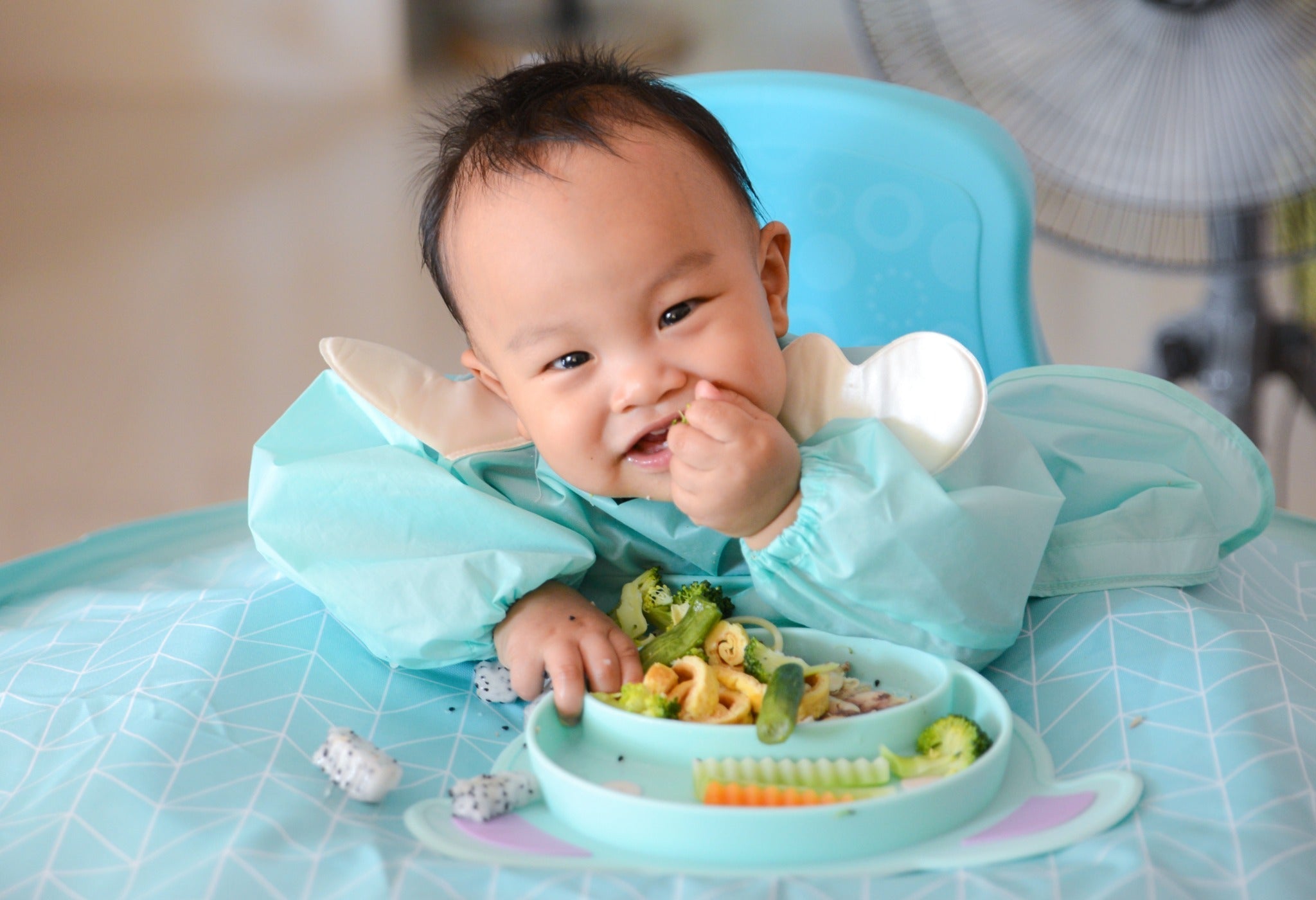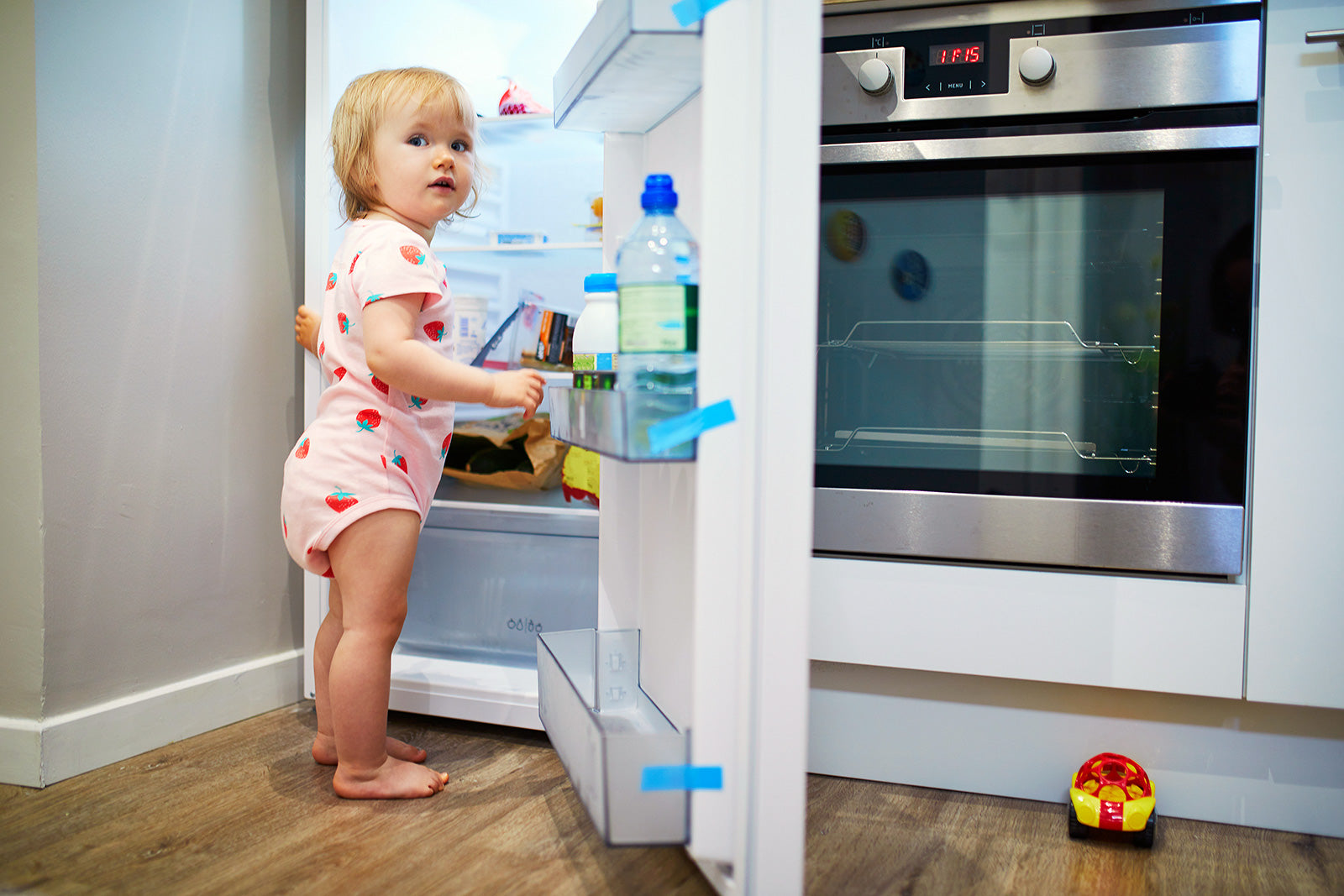Helping Your Child Become a Mindful Eater

Mindful eating utilizes specific strategies to help children develop a positive relationship with food that promotes healthy habits and lasts a lifetime. Helping your child become a mindful eater actually begins at birth and has many benefits.
Feeding babies, toddlers, and kids of any age can feel like an exhausting full-time job. Parents need all the help they can get! The bökee is the perfect assistant for breastfeeding and bottle feeding, and it has plenty of uses beyond the baby stage, too. Choose a color or two to match your style!
What Is Mindful Eating?
Mindfulness has been on a lot of people’s radars in recent years. Between the pandemic, social unrest, and economic worries, leaning into a mindfulness practice has been helpful for many. And this applies to how we nourish ourselves, too.
Mindful eating can look different for everyone, but it relies on a few practices that anyone can utilize:
- Paying attention to the body’s hunger cues and how you feel after eating
- Focusing on the food when eating rather than other distractions such as television or work
- Noticing all sensory input surrounding meal preparation and eating
- Experiencing gratitude for the food and nourishment
- Building awareness of the local and global impact of food choices
Responsive Feeding

Some parents start mindful eating habits for their children through responsive or on-demand breast or bottle feeding. This method follows the baby’s cues to feed them whenever they are hungry, regardless of a schedule or timeline.
Parents who breastfeed their babies tend to fall into on-demand feeding naturally because the breast is nearly always available. But those who pump or use formula can also easily practice responsive feeding by noting their baby’s cues and not forcing them to finish a bottle. (Note: Be sure to follow guidelines for storing and disposing of unused formula or breast milk.)
Allowing a breastfeeding baby to self-regulate also provides the necessary feedback to control lactation. The content and quality of breast milk are always changing to meet a baby’s evolving needs. When your child leads the feeding by deciding when and how long to eat, it’s highly likely that you’re meeting their nutritional needs.
Helping Your Child Become a Mindful Eater: Baby-Led Feeding
When it’s time to transition their little one to solid foods, many parents choose to use baby-led feeding (also called baby-led weaning) to help their child become a mindful eater. Baby-led weaning typically bypasses traditional pureed baby foods that are common on US store shelves.

Instead, parents bring their baby to the table at mealtime once the child is old enough to sit up safely. Babies can access any of the safe foods their family eats, such as cooked vegetables and meat.
Children have the freedom to explore the food with their hands and mouth and enjoy exposure to a wider variety of flavors and textures than pureed food can offer. Many parents find that this practice helps build more mindful and adventurous eating habits.
Benefits of Mindful Eating
A mindful eating habit helps children and adults understand and trust their body’s cues, foster a healthy mind-body relationship, and develop self-awareness and self-regulation.
Put simply, mindfulness is awareness. To be mindful is to notice our emotions, thoughts, and physical sensations in any given situation. When we pair these skills with how we fuel our bodies, it can promote a more holistic sense of wellness.
Many studies indicate that mindful eating helps children and adults slow down while they eat, avoiding overeating and food waste. And for teens, in particular, mindful or intuitive eating can help limit depressive episodes, disordered eating, and body dissatisfaction.
Tips for Teaching Older Kids To Be Mindful Eaters

In general, mindfulness is a beautiful way to support the physical, mental, and emotional well-being of children, teens, and adults. A mindful eating practice can serve our children their whole lives.
Here are some ways to support intuitive eating after your child leaves the baby stage.
Make snacks and meals a focused time.
In our hurried world, it is far too easy to eat on the run, eat in front of a screen, or forget to eat at all. These habits aren’t good for anyone but can be especially harmful to growing kiddos. To help create a more mindful and peaceful experience, consider meal prepping ahead of time.
By focusing on the chance to sit down together and eat, you help yourself and your child connect with the experience of nourishing your bodies. This habit allows you to appreciate and respect the good things food does for us.
Avoid screens when eating.
Don’t get me wrong. I love zoning out in front of Netflix with a bowl of popcorn as much as the next person. And it’s completely ok to do that from time to time! But as much as possible, allow yourself and your children the privilege of eating without any screens around.

It’s easy to default to distracted eating with so many demands on our attention. But it is likely to lead to faster eating and unwanted weight gain in children and adults. Since it can be hard to break this habit, try starting small by making one meal each day screen free for everyone. Eventually, you will be ready to build up to completely undistracted eating.
Involve your children in cooking.
We freely admit and fully recognize that cooking with young children can be challenging. It isn’t always rainbows and unicorns.
But, any time you can include your kids in meal preparation and cooking, it supports mindful eating. Being part of the cooking team helps children feel more connected to the process of nourishing their bodies and makes them more likely to eat a variety of foods. Even toddlers can do tasks in the kitchen to help get dinner on the table!
Pay attention to the five senses.
Modern US society relies heavily on speed, and this includes our eating habits. How often do we “grab a quick bite” on the go? How far can we drive without seeing a handful of fast-food restaurants?

Helping your child become a mindful eater requires an embodied awareness of our sensory experiences. Use meal prep and mealtimes to talk with your children about how the food and ingredients look, sound, feel, taste, and smell.
Simplify Feeding To Support Mindfulness
Since mindful eating begins at birth, you can start this practice at any time. And with our unique one-handed bottle prep tool, you can practice responsive and intuitive feeding with ease. The bökee is here to assist you in feeding, nourishing, and bonding with your baby. Choose your favorites today!




